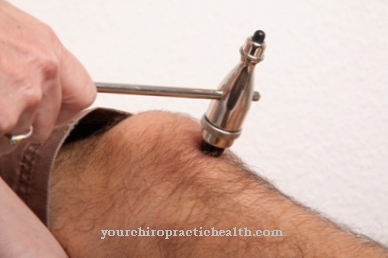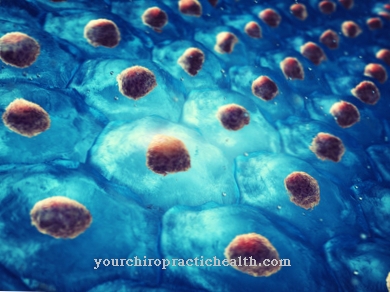The acronym Sensorimotor skills is made up of the two terms sensor and motor functions and describes a motor function of the muscles that are largely unconsciously controlled by sensory impressions. As a rule, these are complex movements that have been learned, such as walking upright, riding a bicycle, playing with balls, driving a car and much more. During the learning process, connections (synapses) arise in certain centers of the brain, which are stored in the multi-sensory movement memory.
What is sensorimotor skills?

The term sensorimotor is an acronym and is made up of the terms 'sensorik' and 'motorik'. Sensory technology encompasses all sensory services that can be consciously experienced, such as seeing, hearing, vestibular and proprioceptive sensory impressions and many more.
An essential feature of the sensorimotor system is that the complex movement sequences are based on multi-sensory messages, some of which can be picked up unconsciously. Even the complex sensorimotor movement sequences themselves can largely take place unconsciously after they have been trained intensively. This has the advantage that motor instructions to the muscles come about much faster, almost reflexively.
Corrective motor skills, which are based on inputs from certain sensors, can be used and executed in fine motor skills much more fluently, elegantly and sensitively. Learning to walk upright is typical for a toddler, who needs a lot of time and intensive practice in order to be able to walk upright fluently and unconsciously.
The field of sensorimotor functions concerns both the neurosciences, which, in addition to the transmission of stimuli, deals with the processing of stimuli in the brain and their conversion into motor stimuli, as well as the sports science, which deals with the optimization of the musculoskeletal system.
Function & task
Complex movement sequences are dependent on inputs from our senses to control gross and fine motor skills. The processing of the "input signals" supplied by the eyes, the sense of balance, the ears and proprioception takes up the greatest part.
A systematic interconnection between sensors and motor functions is therefore the prerequisite not only for very complex movement sequences, but also for movement sequences that make a normal life possible in the first place. Complex interconnections of the individual sensors even make it possible to continue the movement even if a sensor fails temporarily.
For example, walking upright is also possible in the dark, since walking upright can only be controlled via the vestibular system (organ of equilibrium) in conjunction with proprioception. The feedback from the proprioceptors in the feet is sufficient to be able to walk upright. On the other hand, cycling in complete darkness is not possible because the proprioceptors in the feet cannot give any feedback about the position of the bike and the vestibular system can only report acceleration.
On the other hand, the eye is also dependent on vestibular messages, since vestibular stimuli are faster than the complex image processing in the brain. This is noticeable, for example, in a flight simulator without a motion system. Many pilots find it difficult to cope with a fixed flight simulator without a motion platform, since the fast, vestibular stimuli for sensitive and timely control corrections are missing. The multisensory movement then becomes a one-dimensional movement that is solely dependent on the eye.
Most protective reflexes, such as the eyelid closing reflex or the patellar tendon reflex, are also based on a sensorimotor process that z. T. is only switched via a single ganglion, in favor of a reduction in the reaction time between stimulus and execution of the reflex. In the case of the blink reflex, which is supposed to prevent, for example, a flying insect from striking the unprotected eye, a few milliseconds can decide whether the reflex is successful or not.
You can find your medication here
➔ Medicines against concentration disordersIllnesses & ailments
The compound term sensorimotor functions already suggests that problems can arise either on the sensory or on the motor side. Due to the neural complexity of the overall sensor system and the neural interconnection, it is not surprising that problems and diseases are more common on the sensory side than on the motor, muscular side.
Sensorimotor function losses are often caused by primary neuronal diseases such as stroke, Parkinson's, cerebral haemorrhage, dementia or by impairments of the neural afferent sensory transmission pathways or the efferent motor nerves.
In a stroke, the occlusion of an artery leads to a lack of oxygen in the brain area that was supplied by the affected artery. This can have a serious impact on sensorimotor performance if the relevant centers are affected by the infarction.
Polyneuropathy affects peripheral nerves, including sensitive nerves, so that sensorimotor functions can be severely restricted. Diabetics, chronic alcohol abuse and nicotine addiction are at increased risk of developing neuropathy.
The polyneuropathy is an example of a functional impairment of the sensorimotor system due to a disease of the peripheral nerves or the transmission lines of the sensory messages. The central nervous system is not affected in neuropathy. Parkinson’s disease is a non-contagious neural disease, which becomes noticeable very early in its course in an impairment of the sensorimotor performance through a significant slowing down of movements.
An impairment of the sensorimotor function can also have genetic causes, which in weak cases only become noticeable in the adolescent. The tactile sensors of the skin are often affected, which lead to certain failures and deficits in sensorimotor functions.
On the muscular side, various muscle diseases can cause motor impairment. Typical diseases are muscle inflammation (myopathies) and muscular dystrophies as well as various metabolic diseases.
























.jpg)



